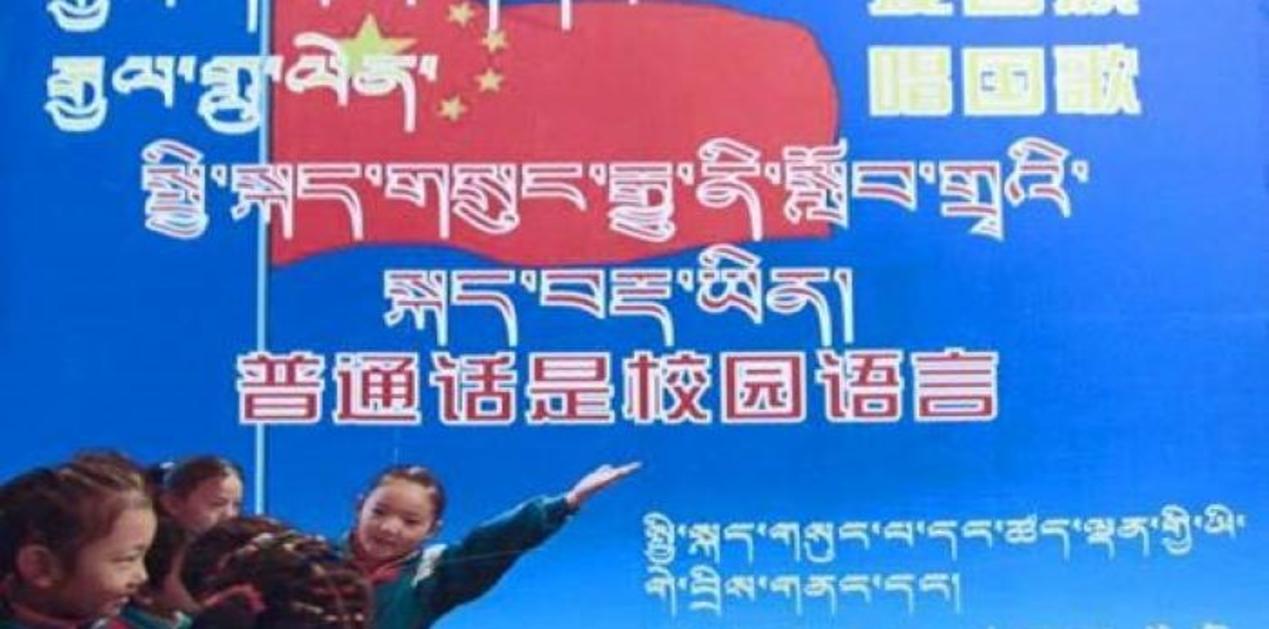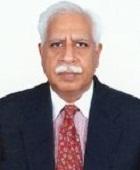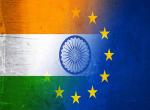The People's Daily on March 25, 2021, published a lengthy 3975-character article authored by Che Dalha (in Chinese: Qi Zala), Chairman of the Tibet Autonomous Region (TAR). Che Dalha’s important article, which included nine mentions of Xi Jinping, predictably focuses on activities in Tibet, but makes explicitly clear that the Tibetans are headed for a difficult period.
A central theme in Che Dalha’s article, which comes in the wake of China’s ‘Lianghui’, or National People’s Congress (NPC) and the Chinese People’s Political Consultative Conference (CPPCC) plenums that concluded on March 11, was the need for ‘unity of the motherland’ and that Tibet and China had inseparable cultural, historical and religious ties. Repeating that Princess Wencheng entered Tibet in 641 AD, it claimed she brought “Buddha statues, and Buddhist scriptures, and also introduced Buddhist culture such as temple construction methods and regulations”. Other points stated that greater efforts will be made to: make Mandarin the main language of instruction in schools; “forge a sense of community of the Chinese nation” among ethnic cadres, especially the leading cadres; adapt “Tibetan Buddhism to socialism with Chinese characteristics” and secure acceptance of China’s role in the recognition of ‘Living Buddhas’ especially the Dalai Lama and Panchen Lama; and ensure greater integration of ethnic Tibetans with other people.
One of the senior-most ethnic Tibetans active in the Chinese Communist Party (CCP), Che Dalha is an upward mobile cadre. He joined the Communist Youth League in 1979 and the CCP in 1982. He is from Shangri-La (formerly known as Zhongdian County) in Yunnan province. After working in various capacities in the Tibetan areas of Yunan, he was sent to TAR around November 2010 to head the Party’s United Front Work Department. He was later promoted to the important post of Party Secretary of Lhasa Municipality replacing Qin Yizhi, a Han, who had held the post since September 2006. Che Dalha’s appointment was welcomed by Tibetans. He is reputed to be pro-active on economic development. This was evident recently when he urged the early grant of approvals and construction of the large dam on the Great Bend on the Brahmaputra (Yarlung Tsangpo), which was approved at the recently concluded NPC plenum. He also advocated exploitation of the natural gas reserves in northern Tibet.
Che Dalha highlighted the benefits that would accrue from the projects approved for Tibet in the “14th Five Year Plan (2021-2025) and the Long Range Objectives through the Year 2035 for National Economic and Social Development of the People’s Republic of China” that was approved at the NPC and CPPCC Plenums which ended on March 11, 2021. Pointing to the imminent huge influx of engineers, technicians and labour from the Mainland, Che Dalha highlighted that the various projects would promote development and raise the incomes of the people of Tibet. He urged that major infrastructure and public service facilities be built around the Sichuan-Tibet railway construction and other projects to promote economic activity. The goal, he said, is for Tibetans to reach or come near the national average per capita disposable income of urban and rural residents by 2025.
Subtly hinting at the possible altering of ratio between Tibetans, Hans and other ethnic nationalities, he laid emphasis on the integration of Han and Tibetan ethnic minorities in towns, streets and the ‘xiaokang’ model border defence villages. Picking up on the NPC’s decision to build 200 new border defence villages, his article called for equal stress on strengthening the border areas. Che Dalha emphasised the need to “vigorously promote population” as well as facilities, industries, and services in the border areas to support the population settled there. The implication is that, as is presently being done in the case of the ‘model well-off (xiaokang) border defence villages’, the number of people residing in these border defence villages will be increased from the average 1 or 3 families to about 20-30 people. This suggests that the resident population in these villages will be integrated with Tibetans from different parts of Tibet, and possibly different Tibetan Buddhist sects, with the aim of diluting cohesion. It is possible that other ethnic nationalities could also be settled in the ‘well-off (xiaokang) border defence villages’.
Chinese President Xi Jinping told delegates from Inner Mongolia to the plenary sessions of the NPC and CPPCC, on March 11 that “cultural identity is the deepest form of identity. It is also the root and soul of ethnic unity and harmony.” Following that message, Che Dalha gave particular stress on the need to “vigorously cultivate and practice the core values of socialism” and make people understand that the ‘Chinese nation is a community with a shared future’. He wrote that multiple measures are necessary to cultivate and practice the core values of socialism, implement the ‘project of the Chinese nation’, and build a ‘patriotism education base’, so that ‘Chinese culture becomes the emotional bond and spiritual belonging of all ethnic groups in Tibet’.
Implying that efforts to make Mandarin, instead of Tibetan, the primary language of instruction in schools in TAR would be energetically pursued, he emphasised the need to continue to promote spoken and written Mandarin (Putonghua) and disclosed that 18 Putonghua proficiency test stations would be established. Mandarin has been replacing Tibetan in schools inethnic Tibetan areas outside TAR since 2015. The process has accelerated after January 20 this year when the Director of the Legal Affairs Committee of the National People’s Congress (NPC), Shen Chungyao, announced during a meeting of the NPC Standing Committee that schools in “minority areas” were no longer allowed to teach their own languages. He declared such education to be “unconstitutional”. In the report that he presented, Shen Chungyao emphasised that local regulations in some cases that allow ethnic schools to use ethnic languages in teaching are inconsistent with the Chinese Constitution's order to promote Putonghua in the country. Che Dalha’s article makes clear that, as is being done in the Xinjiang and Inner Mongolia autonomous regions, Mandarin will now begin to replace Tibetan as the primary language in Tibetan schools inside TAR.
In anticipation of the influx of large numbers of engineers, workers and labourers, he advocated greater exchange and integration of all ethnic groups. Che Dalha invited Tibetan college graduates to work and start businesses in the Mainland, and Mainland enterprises and individuals to start businesses in Tibet. Saying this would help build a ‘mutually embedded social structure and community environment’ and a "multi-ethnic harmonious street (community, family)", Che Dalha revealed that TAR would implement the "Plan for the Establishment of a Model Area for Ethnic Unity and Progress in the Tibet Autonomous Region (2021-2025)". The time-bound plan envisages establishing all 7 prefectures as ‘demonstration areas of national unity and progress’ by 2025. He claimed that Prefectures and 80% of the counties (districts) have already become autonomous region-level model counties for ethnic unity and progress.
This will be reinforced by efforts to superimpose Chinese (Han) history and culture on the Tibetan people. Che Dalha disclosed that work would begin on compiling the "Encyclopedia of Ethnic Unity and Progress (Tibet Volume)". China’s version of the history of Tibet, mentioned in Che Dalha’s article, can be expected to be taught in schools and colleges.
Asserting that “the people of all ethnic groups in Tibet share the same heart with the people of all ethnic groups in the country” and “cherish national unity”, he said that “the consciousness of the Chinese nation's community is deeply integrated into the blood of the people of all ethnic groups in Tibet”. Cadres in ethnic areas, especially ethnic minority leading cadres, were exhorted to strengthen the "four consciousnesses", strengthen the "four self-confidence", and achieve the "two safeguards", continuously improve political judgment, political understanding, and political execution ability. Che Dalha said they must “consciously assume the responsibility and mission of forging a sense of community of the Chinese nation”. They asked them to “always maintain a high degree of consistency with the Party Central Committee with Comrade Xi Jinping at the core. Adhere to the party's strategy of governing Tibet in the new era, and do a good job of stability, development, ecology, and strengthening the frontier”.
Che Dalha devoted an entire paragraph to the issue of ‘sinicisation’ of Tibetan Buddhism and recognition of the Dalai Lama’s reincarnation. He called for the “extensive mobilisation of the masses to participate in the struggle against separatism” and to “form a copper and iron wall to maintain stability”. He stated the need to “actively guide Tibetan Buddhism to adapt to the socialist society”. Stressing the importance of the “Sinicization of Tibetan Buddhism”, he urged “religious rituals and historical customization of the reincarnation of the living Buddha”, so that the reincarnation of the living Buddha “must adhere to the important principle of "domestic search, golden vase drawing, and central approval".
Che Dalha’s article indicates that the recent plenary sessions gave some directives regarding China’s ethnic minority nationalities. TAR now appears poised to see a more energised bid, as noticed in Xinjiang and Inner Mongolia, to superimpose Han culture and history on the Tibetan people. There will be special efforts to mobilise Tibetans against ‘separatism’ – a codeword for the Dalai Lama’s supporters and influence – combined with even greater efforts to get Tibetans and Tibetan Buddhist religious personages to accept Beijing’s authority in recognising the reincarnations of the Dalai Lama and Panchen Lama.
(The paper is the author’s individual scholastic articulation. The author certifies that the article/paper is original in content, unpublished and it has not been submitted for publication/web upload elsewhere, and that the facts and figures quoted are duly referenced, as needed, and are believed to be correct). (The paper does not necessarily represent the organisational stance... More >>
Image Source: https://www.hrw.org/sites/default/files/styles/16x9_large/public/multimedia_images_2020/202003asia_tibet_main.jpg?itok=RbfpxDqM











Post new comment